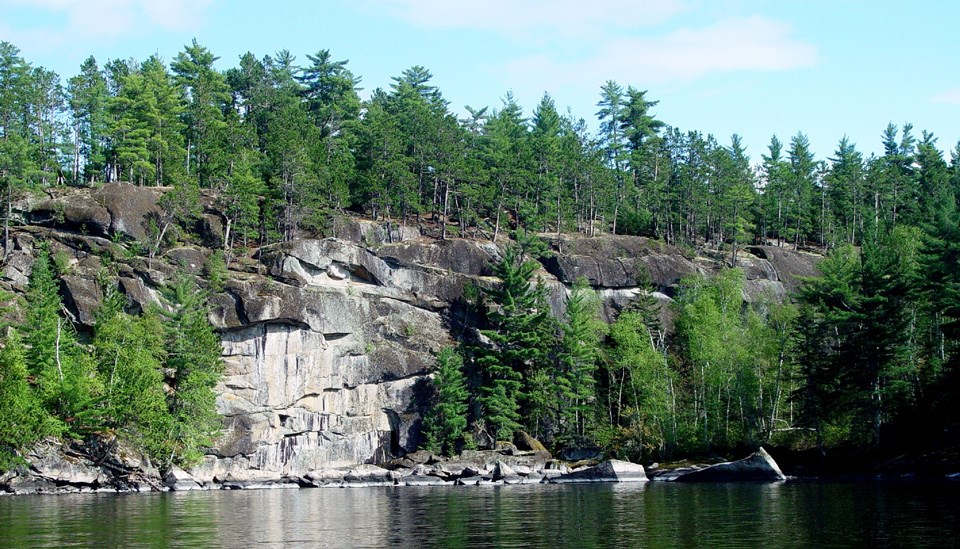
Voyageurs National Park is situated on the southern tip of what is known as the Canadian Shield, a gigantic dome of volcanic bedrock that forms the heart of the North American Continent. This bedrock dates from the birth of North America. Some 2.8 billion years ago, massive volcanoes erupted through this area and deposited layer after layer of ash and lava, building up the island landmasses. These island arc volcanoes collided forming still larger landmasses. Subsequent uplifting, folding, superheating along with tremendous pressure created igneous and metamorphic rock to form the present day granite and schist of the Kabetogama Peninsula. Eons of erosion then wore down these volcanic mountain ranges to the landscape you see today.
Visiting Grassy Bay Cliffs The sheer granite cliffs of Grassy Bay rise 125 feet above the surface of Sand Point Lake and reach one of the highest points within Voyageurs. This Lac La Croix biotite granite batholith (a body of magma that cooled underground) is the largest and youngest igneous intrusion in the area, dated at 2.64 to 2.69 billion years old. In summer, these cliffs are accessible by boat and in winter by snowmobile. There are currently no amenities at this Visitor Destination. History The bedrock that makes up Voyageurs was shaped and carved by at least four periods of glaciation. The most recent continental glaciation in North America ended about 10,000 years ago. The Pleistocene Era began more than 40,000 years ago when Earth's summer temperatures averaged around 27° Fahrenheit and were not warm enough to melt the thick sheets of ice that covered the landscape. The ever increasing weight of snow compacted down into thick glacial layers of solid ice, which formed a massive continental glacier, known as the Laurentide Ice Sheet. Traveling at a speed of up to 2 feet per day this massive ice sheet began to move south across the northern United States. The force of this ice sheet swept up huge rocks from what is now northern Canada and carried them along like a conveyer belt as it ground its way as far as southern Illinois.Evidence of glaciers is abundant in Voyageurs National Park. Rocks of various compositions were transported from the north by glaciers and deposited randomly over the landscape as the glaciers melted. These glacial erratics range in size from pebbles to large boulders. The advance and retreat of these Pleistocene glaciers left an imprint on the rock and shaped the Voyageurs landscape we see today. 
|
Last updated: April 30, 2018
